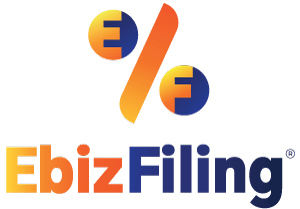
-
June 12, 2023
Tips to Create an Effective Memorandum of Association (MOA) for a Company
Introduction
The Memorandum of Association (MOA) is an important document that outlines the fundamental details, objectives, and structure of a company. It serves as a foundation for the company’s operations and provides important information to stakeholders. Creating an effective MOA requires careful consideration and attention to detail. In this article, we will explore some valuable tips to help you craft an impactful and comprehensive Memorandum of Association.
What is a Memorandum of Association (MOA)?
A Memorandum of Association (MoA) is the company’s charter. It is a legal document prepared during the formation and registration process of a company to define its relationship with shareholders and to specify the company’s objectives. The company can only engage in the activities specified in the Memorandum of Association. As such, the MOA establishes the limit beyond which the company’s actions are not permitted.
The Memorandum of Association informs shareholders, creditors, and anyone else dealing with the company about the company’s basic rights and powers. Furthermore, the contents of the MoA assist prospective shareholders in making the right decision when considering investing in the company. A Memorandum of Association must be signed by at least two subscribers in the case of a Private Limited Company and seven members in the case of a public limited company.
List of Clauses of MOA (Memorandum of Association)
Certain clauses are required to be included in every MOA:
-
Subscription Clause
-
Object Clause
-
Situation Clause
-
Name Clause
-
Liability Clause
-
Capital Clause
Tips to create a Memorandum of Association for a Company
The following are the tips for creating an effective MOA for a Company:
-
Understand the Legal Requirements
Before drafting the MOA, it is essential to have a thorough understanding of the legal requirements specific to your jurisdiction. Familiarize yourself with the laws, regulations, and guidelines that govern the formation and operation of companies. This will ensure that your MOA is compliant and meets all the necessary legal obligations.
-
Clearly Define the Company’s Name and Registered Office:
Draft the MOA by stating the company’s name, followed by its registered office address. The name should be unique, distinctive, and compliant with the naming conventions prescribed by the regulatory authorities. The registered office address should reflect the physical location where the company conducts its business.
-
Outline the Company’s Objectives
The MOA should clearly define the objectives or purposes for which the company is formed. This section should be concise, specific, and aligned with the intended activities of the company. It is important to avoid broad or vague statements and it should provide a focused and well-defined description of the company’s core objectives.
-
Specify the Liability of Members
Determine and clearly state the liability of the company’s members, whether it is limited by shares or guarantees. For a public limited company, the liability is generally limited by shares. It should also specify the extent of liability for each member and outline the obligations they have towards the company’s debts and obligations.
-
Detail information about Share Capital
Provide comprehensive information regarding the share capital of the company. Include the total authorized share capital, the number of shares and their nominal value, and the rights and privileges associated with each class of shares. Specify any restrictions on the transfer of shares and the procedures for issuing additional shares.
-
Include Provisions for Association of Members
Describe the rules and regulations governing the association of members to form the company. This section should cover aspects such as the rights and responsibilities of shareholders, procedures for general meetings, voting rights, appointment and removal of directors, and any other relevant provisions related to the management and governance of the company.
-
Seek Professional Assistance
While drafting the MOA, it is advisable to seek professional legal assistance. An experienced lawyer or company secretary can provide valuable insights and ensure that the MOA complies with all legal requirements. They can also help you navigate any specific provisions or complexities related to your jurisdiction or industry.
-
Regularly Review and Update the MOA
A Memorandum of Association is not a static document. As the company evolves, it may be necessary to review and update the MOA to reflect any changes in the company’s objectives, share capital, or other relevant aspects. Regularly reviewing and updating the MOA will ensure its accuracy and alignment with the company’s current operations.
Conclusion
Crafting an effective MOA is crucial for establishing a solid foundation for your company. By understanding the legal requirements, clearly defining objectives, outlining member liability and share capital, and seeking professional assistance, you can create a comprehensive and compliant MOA. Remember to regularly review and update the MOA to reflect any changes in your company’s structure or operations. A well-drafted MOA sets the stage for a successful and legally sound company.
Amend Your MOA/AOA
Memorandum needs to be changed when there’s change in object or liability or capital. Prices starting at INR 4999/- only.
About Ebizfiling -










Reviews
Aditya Dufare
24 Aug 2021Prompt service.They value your time. Professional and experienced staff to guide you. offer services at very competitive price. I would like to continue with them in future. must try.
Ashrith Akkana
19 Apr 2022I took import export certificate from the ebizfiling. They have done the work on time.. Thank you for making my import export certificate in time 😊
Hemang Malhotra
08 Oct 2018I was new as an Entrepreneur when I had seen their post on social media. I contacted them regarding proprietorship and realized they their pricing is incomparable in the market also their services are really prompt. Thank you, Ebizfiling.
February 26, 2025 By Team Ebizfiling
Voluntary vs Involuntary Strike Off Company in India A company in India can remove itself from the official register voluntarily, or the Registrar of Companies (ROC) can remove it involuntarily. Understanding the difference helps business owners stay compliant and avoid […]
January 1, 2025 By Team Ebizfiling
Essential Tips for Drafting a Shareholders’ Agreement A shareholders’ agreement is a critical legal document that establishes the framework for the relationship between shareholders and a company. It outlines the rights, duties, and obligations of shareholders and provides guidelines for […]
February 4, 2025 By Team Ebizfiling
Monthly Compliance Requirements for Private Limited Companies Private limited companies (PLCs) are widely favored for their limited liability, structured ownership, and access to capital. However, operating a private limited company comes with a responsibility to adhere to various legal and […]